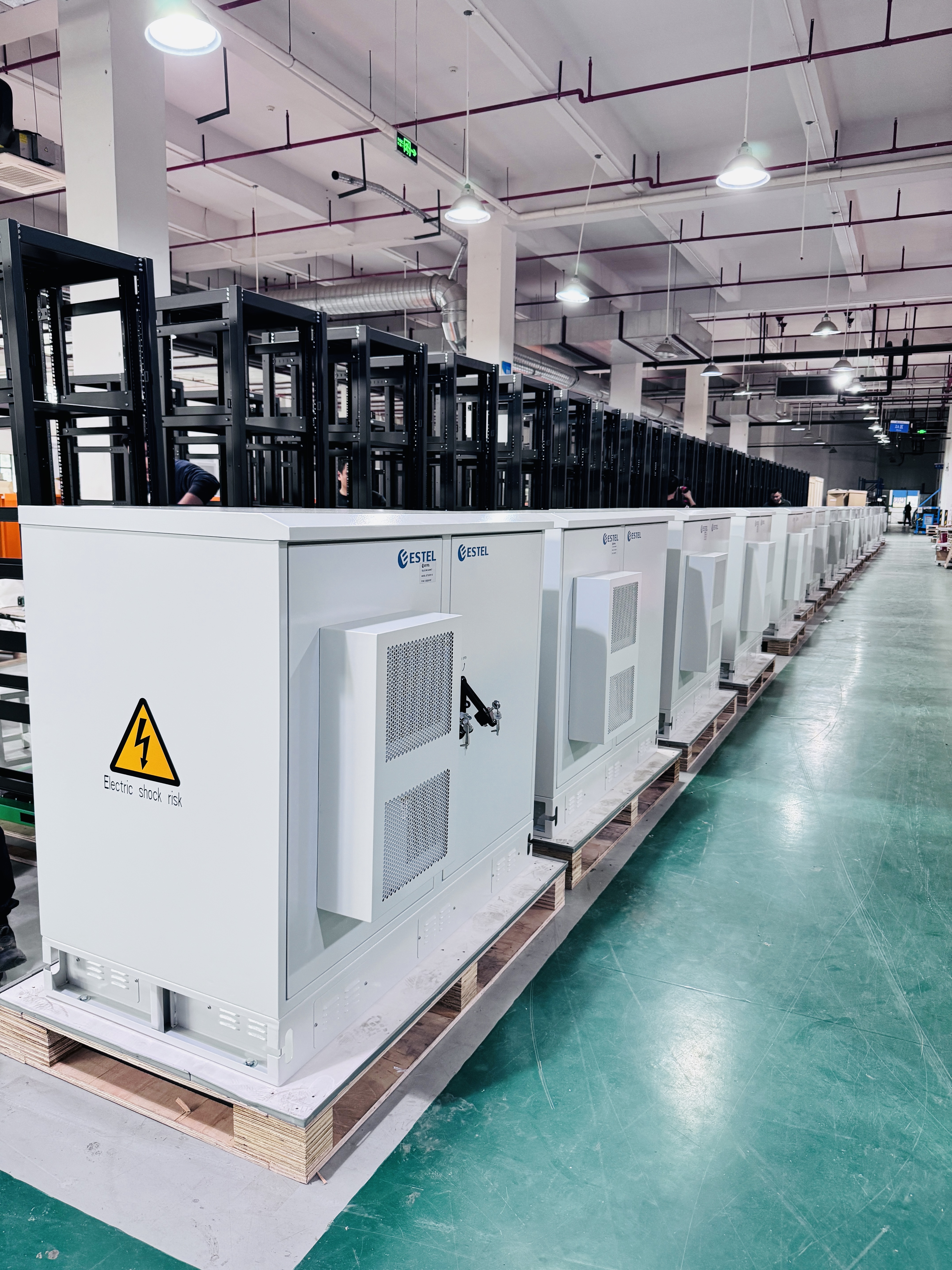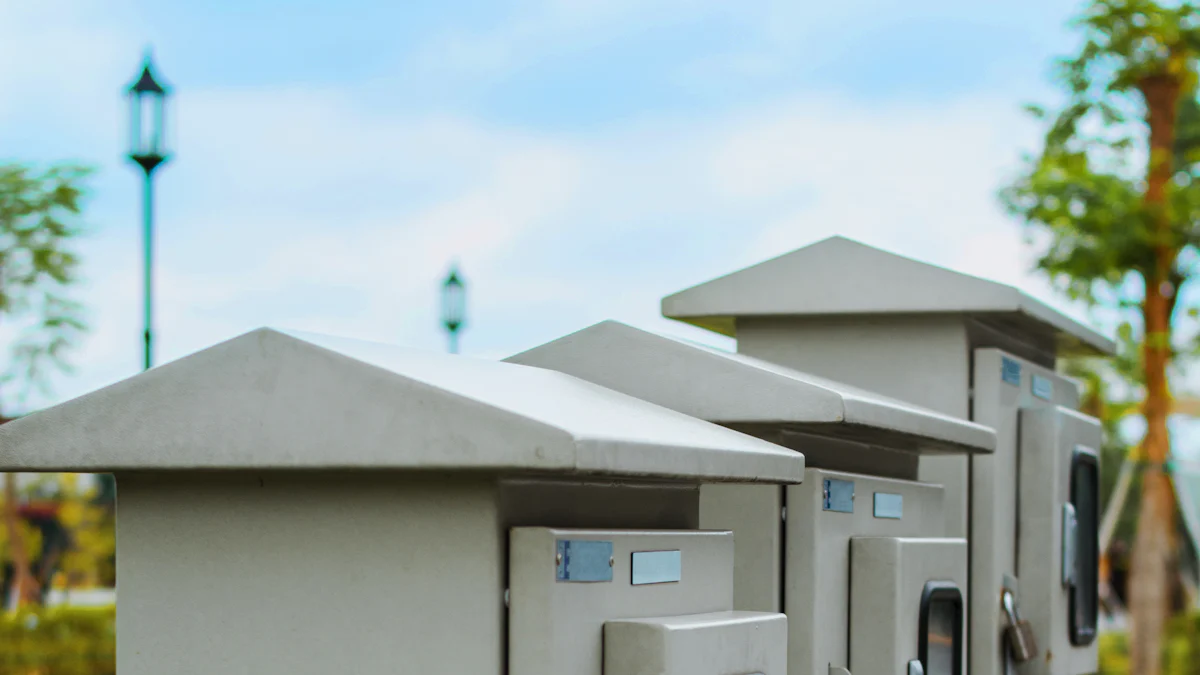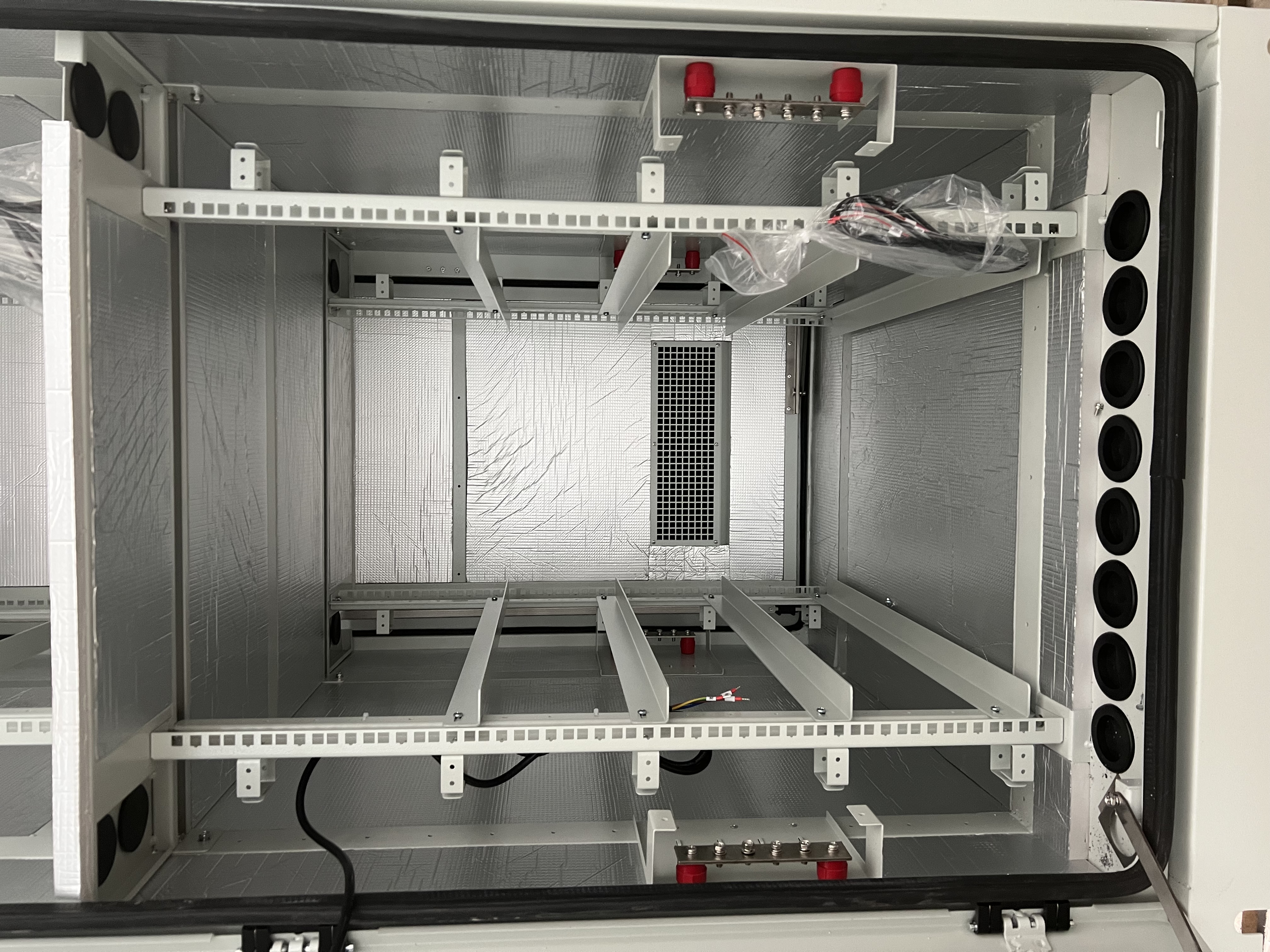How to Keep Outdoor Communication Cabinets Safe from Vandalism

Outdoor communication cabinets play a vital role in maintaining uninterrupted connectivity. However, these enclosures often face threats from vandalism, theft, and harsh environmental conditions. Without proper security, outdoor telecom equipment cabinets become easy targets for damage or unauthorized access. You must prioritize durable designs and advanced protective measures to safeguard these critical assets. Proactive strategies, such as regular inspections and robust locking systems, ensure long-term reliability and protection. By addressing these vulnerabilities, you can prevent costly disruptions and maintain the integrity of your communication infrastructure.
Key Takeaways
Use strong materials like stainless steel or fiberglass for cabinets. These materials last long and resist weather and damage.
Add advanced locks, like fingerprint or electronic ones. These locks allow only approved people and track who opens them.
Check security often to find weak spots. Regular checks keep security strong and stop big problems.
Set up cameras that turn on with motion. These cameras scare off vandals and let you watch cabinets live.
Teach workers about safety rules and reporting strange things. A trained team can act fast if there’s a problem.
Understanding Outdoor Communication Cabinets and Their Risks
What Are Outdoor Communication Cabinets?
Outdoor communication cabinets are specialized enclosures designed to house and protect critical telecom equipment in outdoor environments. These cabinets serve multiple purposes, including safeguarding equipment from theft and vandalism, ensuring proper cable management, and providing resistance to environmental challenges like corrosion and extreme weather. They often feature tamper-proof designs, sturdy locks, and advanced security features to prevent unauthorized access. Additionally, these cabinets are built with scalability in mind, allowing for future network expansions or modifications. Unlike indoor enclosures, outdoor cabinets are constructed with rugged materials and higher NEMA ratings (3, 4, 5, or 6) to withstand harsh conditions such as hailstorms and heavy rain.
Common Risks to Outdoor Telecom Equipment Cabinets
Vulnerability to Vandalism and Theft
Outdoor telecom equipment cabinets are frequently targeted by vandals and thieves due to their remote locations. Physical attacks, graffiti, and unauthorized access are common forms of vandalism. These acts can damage the equipment inside, leading to costly repairs and network disruptions. Theft of valuable components, such as copper wiring, further compromises network security and increases operational expenses. Installing secure telecommunications cabinets with tamper-resistant designs and advanced locks can significantly reduce these risks.
Environmental Challenges Like Weather and Corrosion
Outdoor communication cabinets face constant exposure to environmental hazards. High wind speeds, saltwater exposure, and pollution can degrade the materials over time. Corrosion and UV damage are particularly problematic in coastal or industrial areas. Cabinets with weather-resistant designs, such as sealed enclosures and UV-resistant coatings, provide essential protection against these elements. Additionally, some cabinets are engineered to withstand seismic activity, ensuring uninterrupted operation during natural disasters.
Insufficient Access Control Measures
Poor access control leaves outdoor telecom equipment cabinets vulnerable to unauthorized entry. Basic locking mechanisms are often inadequate against determined intruders. Advanced security features, such as biometric locks and remote access systems, enhance protection by restricting entry to authorized personnel only. Regular audits of access protocols and the integration of alarm systems further strengthen the security of these enclosures.
Essential Security Features for Outdoor Telecom Enclosures

Durable and Tamper-Resistant Materials
Benefits of Using Reinforced Materials Like Stainless Steel
Choosing the right materials for outdoor telecom enclosures is critical to ensure durability and tamper resistance. Stainless steel stands out as an excellent option due to its high corrosion resistance and flexibility. It provides long-lasting protection against environmental factors like moisture and saltwater, making it ideal for coastal or industrial areas. Fiberglass is another strong contender, offering heat dissipation and electrical insulation while maintaining high tamper resistance. These materials not only extend the lifespan of the enclosure but also reduce maintenance costs over time.
Examples of Tamper-Proof Designs for Secure Telecommunications Cabinets
Secure telecommunications cabinets often incorporate tamper-proof designs to protect the security of sensitive equipment. Common features include high-security steel doors, keyed locks, and mechanical combination locks. Some designs add an extra protective layer to prevent damage from physical attacks. Manufacturers rigorously test these cabinets to ensure they meet industry standards for durability and security. By investing in such designs, you can safeguard your telecom equipment enclosures from vandalism and accidental access.
Material | Durability Features | Tamper-Resistance Features |
|---|---|---|
Carbon Steel | Good durability, cost-effective, prone to corrosion | Standard tamper resistance |
Stainless Steel | High durability, corrosion-resistant, flexible | Excellent tamper resistance |
Galvanized Steel | Corrosion-resistant due to zinc coating | Moderate tamper resistance, vulnerable to salt water |
Fiberglass | Very strong, heat dissipating, electrical insulation | High tamper resistance |
Polycarbonate | Corrosion-resistant | Good tamper resistance |
Advanced Locking Mechanisms
Importance of Tamper-Proof and Electronic Locks
High-security locks are essential for protecting outdoor telecom equipment cabinets. Tamper-proof locks prevent unauthorized access and deter potential intruders. Electronic locks take security a step further by integrating advanced features like tamper-evident seals and access logging. These mechanisms restrict entry to authorized personnel and provide an audit trail for monitoring purposes.
Mechanical security is crucial for protecting critical infrastructure in outdoor cabinets. Advanced mechanical security features, such as secure locking mechanisms and tamper-evident seals, are designed to prevent unauthorized access and tampering.
Role of Biometric and Remote Access Systems
Biometric and remote access systems enhance security by ensuring only verified personnel can access the enclosure. These systems offer real-time monitoring and operational efficiency. For example, a Bluetooth-enabled app allows you to authorize access remotely, providing flexibility and convenience. Additionally, biometric systems record every action taken by technicians, creating detailed audit reports for better network security management.
Advantage | Description |
|---|---|
Enhanced Security | Access is granted only upon successful verification, effectively preventing unauthorized entry. |
Operational Efficiency | The system records every action taken by technicians, providing detailed audit reports for monitoring. |
Convenience | Real-time remote authorization through a Bluetooth-enabled app allows flexible access control. |
Weather-Resistant Designs
Sealed Enclosures to Protect Against Environmental Damage
Outdoor telecom enclosures must withstand harsh environmental conditions to protect remote equipment. Sealed designs prevent water, dust, and debris from entering the cabinet, ensuring optimal protection for the equipment inside. High-quality materials like stainless steel or aluminum provide additional weather resistance, while thermal insulation and fire-resistant coatings enhance durability in extreme conditions.
UV-Resistant Coatings and Corrosion Prevention
UV-resistant coatings and corrosion-prevention measures are vital for maintaining the integrity of outdoor communication cabinets. Enamel paint and epoxy enamel are popular choices for their ability to resist weather damage and corrosion. In areas with high pollution or saltwater exposure, additional sealing options can further enhance protection. These features ensure your enclosure remains functional and visually intact, even in the most challenging environments.
Coating Type | Properties |
|---|---|
Enamel Paint | Glossy finish, resistant to weather conditions |
Epoxy Enamel | Highly resistant to corrosion |
PU Enamel | Resistant to corrosion |
Powder Paint | Flexible in appearance, quick application |
Anti-Vandalism Measures for Secure Telecommunications Cabinets

Surveillance and Monitoring Systems
Installing Motion-Activated Security Cameras
Installing motion-activated security cameras is a first-class anti-vandalism security measure for outdoor telecom equipment cabinets. These cameras activate only when movement is detected, conserving energy and storage. Modern options, such as solar-powered models, reduce maintenance needs and ensure continuous operation. Power over Ethernet (PoE) technology simplifies installation and provides reliable performance. High-resolution cameras, including 4K options, offer clear footage for identifying intruders. Advanced motion detection with AI features minimizes false alarms by distinguishing between humans and animals. Brands like Reolink and Eufy provide robust solutions with local storage and smart system integration.
Benefits of Remote Monitoring and Alerts
Remote monitoring systems enhance the security of outdoor communication cabinets by providing real-time updates. You can access live camera feeds and receive alerts on your smartphone or computer. This allows you to respond quickly to potential threats, even when off-site. Continuous monitoring of cabinets ensures that any suspicious activity is detected immediately. Integrating cameras with alarms further strengthens this system, creating a comprehensive defense against vandalism.
Alarm and Notification Systems
How Alarms Deter Unauthorized Access
Alarms play a critical role in protecting secure telecommunications cabinets. They detect unauthorized access attempts and trigger loud alerts, scaring off intruders. Motion sensors and door alarms provide an additional layer of security by notifying personnel of breaches. These systems not only deter vandalism but also prevent theft of valuable equipment.
Integration with Centralized Monitoring Systems
Integrating alarms with centralized monitoring systems improves response times and reduces false alarms. Cloud-based solutions allow you to monitor alarms remotely, ensuring flexibility. Video verification technology helps confirm threats, minimizing unnecessary interventions. Tailoring alarm systems to your specific needs ensures maximum efficiency. For example, combining alarms with access control systems enhances overall security by restricting entry to authorized personnel.
Perimeter Security Enhancements
Use of Fencing, Barriers, and Warning Signs
Physical barriers like fencing and bollards protect outdoor telecom equipment cabinets from unauthorized access and vehicle impacts. Warning signs act as a deterrent by informing potential intruders of the security measures in place. Proper lighting around the enclosure improves visibility, reducing the likelihood of vandalism.
Additional Anti-Vandalism Devices Like Motion Sensors
Motion sensors are an effective addition to your security setup. They detect movement around the enclosure and trigger alarms or cameras. Combining these sensors with other devices, such as exterior lighting and surveillance cameras, creates a robust anti-vandalism system. Door alarms further enhance protection by alerting you to unauthorized attempts to open the cabinet.
Proactive Maintenance and Security Practices
Regular Security Audits
Importance of Routine Inspections for Vulnerabilities
Routine security audits are essential for identifying and addressing vulnerabilities in outdoor telecom enclosures. These inspections help you detect weak points in locking mechanisms, access control systems, and surveillance setups. By conducting regular audits, you can ensure that your security measures remain effective against vandalism and unauthorized access. Frequent evaluations also allow you to stay ahead of potential threats, minimizing the risk of costly disruptions.
Checklist for Maintaining Outdoor Telecom Enclosures
A well-structured checklist simplifies the maintenance of outdoor communication cabinets. Use the following table to guide your inspections:
Checklist Item | Description |
|---|---|
Security | Ensure cabinets have sturdy locks and tamper-proof designs. |
Cable Management | Verify proper organization of cables and entry points. |
Environmental Considerations | Assess the cabinet's ability to withstand specific environmental conditions. |
Customization and Scalability | Confirm the enclosure can accommodate future expansions or modifications. |
Vendor Reputation and Support | Work with reputable vendors offering reliable technical support. |
Staff Training and Awareness
Educating Personnel on Security Protocols
Your staff plays a critical role in maintaining the security of outdoor telecom equipment. Train your team on proper security protocols, including how to operate advanced locking systems and monitoring tools. Educated personnel can better identify and respond to potential threats, ensuring the safety of your equipment. Regular workshops and refresher courses keep your team updated on the latest security practices.
Reporting and Responding to Suspicious Activities
Encourage your staff to report any suspicious activities near telecom enclosures immediately. Quick reporting allows you to take prompt action, preventing potential breaches. Equip your team with clear guidelines on how to respond to threats, such as activating alarms or contacting security personnel. A proactive approach ensures that your monitoring systems work effectively to deter vandalism.
Emergency Response Plans
Steps to Take During a Security Breach
Having a clear emergency response plan is vital for minimizing damage during a security breach. Start by isolating the affected area to prevent further access. Notify your security team and review surveillance footage to assess the situation. If necessary, shut down the equipment to protect sensitive data. Document the incident thoroughly for future analysis and improvements.
Coordination with Law Enforcement and Security Teams
Collaborating with law enforcement and private security teams strengthens your emergency response. Share access to your monitoring systems and provide detailed information about the breach. This coordination ensures a swift resolution and helps deter future incidents. Establishing strong relationships with local authorities enhances the overall security of your telecom enclosures.
Securing outdoor communication cabinets is essential for maintaining reliable network performance and protecting sensitive equipment. Using durable materials like corrosion-resistant stainless steel or non-conductive aluminum ensures long-term protection against environmental hazards such as rust, UV radiation, and extreme temperatures. These materials also reduce maintenance costs by safeguarding components from dust and moisture.
Advanced locking mechanisms, including biometric or electronic access controls, enhance security by restricting entry to authorized personnel. Anti-vandalism measures, such as tamper-resistant enclosures, surveillance systems, and alarm notifications, deter unauthorized access and provide real-time alerts during breaches.
Proactive strategies, like regular audits, staff training, and emergency response plans, further strengthen your security framework. By implementing these measures, you can ensure the longevity and safety of your outdoor telecom equipment while minimizing risks and operational disruptions.
FAQ
1. Why are outdoor communication cabinets targeted by vandals?
Vandals often target outdoor communication cabinets because of their remote locations and valuable components. These enclosures may contain copper wiring or other materials that can be sold. Additionally, their accessibility makes them easy targets for graffiti or physical damage.
2. What is the best material for outdoor telecom enclosures?
Stainless steel is the best material for outdoor telecom enclosures. It resists corrosion, withstands harsh weather, and offers excellent durability. Fiberglass is another strong option, providing electrical insulation and heat dissipation while maintaining high tamper resistance.
Tip: Choose materials based on your location's environmental conditions for maximum protection.
3. How do advanced locking mechanisms improve security?
Advanced locking mechanisms, such as biometric or electronic locks, restrict access to authorized personnel only. They also provide an audit trail, allowing you to monitor who accessed the cabinet and when. This reduces the risk of unauthorized entry and theft.
4. Can surveillance cameras prevent vandalism?
Yes, surveillance cameras act as a deterrent by monitoring activity around the cabinet. Motion-activated cameras, in particular, capture footage only when movement occurs, conserving energy and storage. Remote monitoring systems allow you to respond quickly to suspicious activity.
5. How often should you inspect outdoor communication cabinets?
You should inspect outdoor communication cabinets at least quarterly. Regular audits help identify vulnerabilities, such as damaged locks or environmental wear. Frequent inspections ensure your security measures remain effective and prevent costly disruptions.
Note: Create a checklist to streamline your inspection process and ensure thorough evaluations.
See Also
How to Determine the Ideal Size for Your Telecom Cabinet
Optimizing Outdoor Cabinets with Power, cooling and Monitoring
How to Create a Communication Room That Meets Industry Standards
CALL US DIRECTLY
86-13752765943
3A-8, SHUIWAN 1979 SQUARE (PHASE II), NO.111, TAIZI ROAD,SHUIWAN COMMUNITY, ZHAOSHANG STREET, NANSHAN DISTRICT, SHENZHEN, GUANGDONG, CHINA

